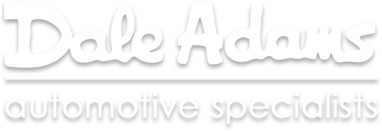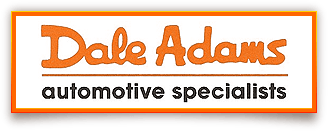If you hear noises that seem out of place in your vehicle, please don't ignore them. Not paying attention may end up costing you more if you let parts fail. Contact us to book a service appointment today and make sure that click, bang, hiss, wrrrrr, isn't something more serious!
Read MoreSmart Vehicle Maintenance That Saves You Thousands
When it comes to vehicle maintenance that truly pays for itself, you're looking at services that prevent bigger, more expensive problems, extend the life of your vehicle, and keep it running efficiently and safely.
Here are the top maintenance items that save you money in the long run:
🔧 1. Regular Oil Changes
-
Keeps your engine properly lubricated and prevents wear.
-
Skipping oil changes can lead to engine sludge, overheating, and even complete engine failure.
-
Pays off by avoiding $3,000–$10,000 engine replacements.
💨 2. Tire Maintenance (Rotation, Balancing, Pressure)
-
Even tire wear = longer tire life (a full set can cost $800+).
-
Proper inflation improves fuel economy and handling.
-
Prevents blowouts and uneven tread that can lead to suspension issues.
🚗 3. Brake Inspections & Pad Replacements
-
Replacing brake pads regularly (~$150–$300) is far cheaper than damaging rotors or calipers.
-
Worn brakes reduce stopping power and can be dangerous.
-
Ignoring brake issues can easily lead to $1,000+ repairs or worse — accidents.
💡 4. Fluid Checks & Top-Ups
-
Coolant, transmission, brake, and power steering fluids all play key roles.
-
Low or dirty fluids cause expensive component damage (like overheating, slipping transmission).
-
A $100 fluid flush is much cheaper than a $4,000 transmission replacement.
🔌 5. Battery and Electrical Checks
-
A weak battery can damage your starter or alternator.
-
Replacing a battery costs ~$150, but skipping checks could cause breakdowns and electrical issues.
🛞 6. Wheel Alignments
-
Keeps your car handling properly and reduces tire wear.
-
Misalignment causes drag, hurting gas mileage and making tires wear faster.
-
A ~$100 alignment can prevent hundreds in premature tire replacement.
🔍 7. Regular Inspections (Like the AMA or Out-of-Province Inspections)
-
Identifies small problems before they become major mechanical failures.
-
Especially helpful for older vehicles or before buying/selling a used car.
-
Peace of mind and resale value boost included.
💨 8. Air Filter & Cabin Filter Replacements
-
Engine air filters help with fuel efficiency and performance.
-
Cabin filters protect your HVAC system and air quality.
-
Dirty filters make your engine work harder, hurting mileage and power.
📅 9. Timing Belt or Chain Replacement (As Recommended)
-
Ignoring this can cause your engine to catastrophically fail.
-
These are scheduled major maintenance items but critical to long-term reliability.
-
Spending ~$1,000 on a timing belt beats $4,000–$8,000 on engine repairs.
Summary:
🛠️ Preventative maintenance is cheaper than repairs.
If you're maintaining your oil, tires, fluids, brakes, and catching problems early, you're saving thousands over the life of your vehicle — and driving a safer, more reliable car.
Dale Adams has only expert mechanics and we work on some of the top performance vehicles in the world. You can trust the team that performance and vintage vehicle owners trust their 'babies' with. Book your regular maintenance today and avoid costly future repairs.
The Dale Adams Team

5 Things That Will Save You From a Vehicle Emergency
Driving is a necessity for a lot of people in the world today. Whether it be going to work, school or anywhere in between, you can see plenty of vehicles on the roads getting to where they need to be.
As more people drive to their destination, the more dangerous it can be on the roadways. Here are 5 quick tips that can keep you and your family safe on the roads, no matter where you go!
Checking Your Blind Spots
Checking your blind spot may seem like a no-brainer, but you’d be surprised at how many accidents a year are related to drivers not checking their blind spot! The first thing every driver must do is adjust their mirrors. When positioned correctly, side mirrors help eliminate the blind spot in your vehicle. Though most modern vehicles have blind spot monitors, it is always safer to check your blind spot yourself.
Don’t Brake During a Blow Out
If you experience one of your tires blowing out while you are traveling, DO NOT slam on the brakes! Although your first instinct might be to stop your vehicle, doing this may cause your car to fishtail or even flip over. What you should do instead is apply pressure to the gas pedal until the vehicle stabilizes and then guide your car to a safe zone with your foot off the gas and brake pedals. The drag from your tire blowing out will stop the vehicle eventually. Afterward you can change the tire or call for help.
Always Carry a Safety Kit
It is important to always keep a safety kit in your car. Your car safety kit should have some of the following:
- Collapsable shovel
- Traction aid (Sand, salt, kitty litter)
- Jumper cables
- Flashlight & extra batteries
- Fire extinguisher
- Road flares
- Blankets
- First Aid kit
- Water & non-perishable food
- Battery powered cell phone charger (Charged, of course!)
- Portable battery charger
Having a safety kit in your vehicle can help during times of car trouble. Including an old cell phone in your kit can help in emergencies, as phones can still connect to emergency services without being connected to an active phone contract. There are many things you can put in your safety kit, and it is completely customizable for you.
Drift out, Drift in, unless There’s Danger
We all drift out of our lanes from time to time. We drift because we lose focus, or other things need attention (or get attention, like changing songs on an iPod).
If you drift, you don’t need to take a violent sudden action to correct it, unless danger is looming. Assuming no one is near enough to be affected, you can simply drift back into your lane and continue on your way.
There’s no need for drama most of the time.
Regular Maintenance!
We know this last one is obvious, but seriously, when is the last time you actually checked if the following are in good working order and have been kept up on maintenance? How many are you ignoring?
1. The Oil
2. The Tire Pressure
3. The Brakes
4. The Power Steering Fluid
5. Wheel Alignment
6. The Antifreeze or Coolant
7. The Tire Treads
8. The Air Filter
9. The Transmission Fluid
10. The Lights – All of Them
Any of these 10 crucial elements of your vehicle can cause a serious problem in a bad situation. We are all guilty of ignoring maintenance but as your safety is involved, as well as a major investment in your vehicle, we can't emphasize enough how important it is to keep up on these things. You can do much of this yourself, or bring your vehicle in to us at Dale Adams Automotive and we will always give you exceptional quality of service at a fair price.
Here is a link to better explanations of these important items.
BONUS TIP: EXTREME SITUATION
How to Escape from a Sinking Car
This will probably never happen to you. Or to anyone you know.
But knowing the steps to get out of a sinking car may save your own life, as well as those of your passengers. Think it through, while sitting in your car, and remember your plan, and you’ll be in good shape. Here are the steps to take when your car ends up in the water.
- Keep your cool. Panic will put you in more danger.
- Hold on to the steering wheel at the 9 and 3 positions (or even 8 and 4) to avoid injury if the airbags inflate.
- As soon as the car is in the water, undo your seatbelt–and help small children do the same.
- Do not worry about making the cell phone call.
- Open the window–or a window–as quickly as possible. Electrical systems should work for a short period after the car lands in the water. Don’t worry yet about the doors–that could cause a quick sink rather than a slow one.
- If you can’t open the window, use a hammer or window breaking tool you have stowed conveniently to smash the windows.
- Get air in your lungs and get out of the window.
- If the car is filling with water, know that you will not be able to open the door until the water pressure is equal inside and out. You will still have an air pocket up near the roof of the car.
- Help children out first then follow them to the surface.
As with any safety plan, it’s important to have a plan–know what you will do. You will only need to think about it once or twice in your driving career, but you may end up being thankful you did.
Stay Safe
Being a safe driver is paramount to keeping you and everyone around you safe. Always be aware of your surroundings and never make any rash decisions. Plan ahead for the moderate cost of maintaining a vehicle and make time to check your vehicle at least every 3 months. If you have questions or concerns we are only a call or email away.


